Killala
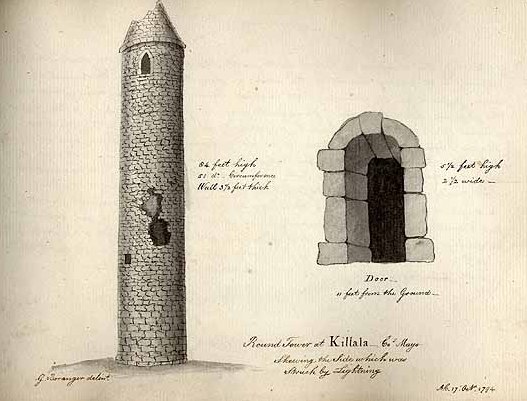
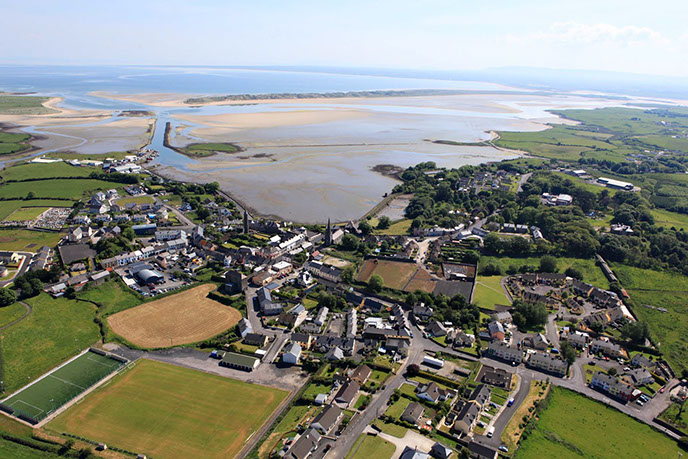
Welcome to the ancient, historic and friendly town of Killala: King Awley’s Regal Town.
Fáilte Mór roimh cách, thig an baile ársa, stairiúil, Cill Alaidh: Baile Puirt Amhalgaidh.
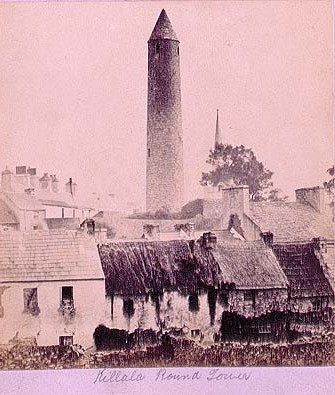 “There was the great Atlantic rolling its crested billows against the granite headlands: and from the same eminence I could see the time-worn belfry of the ancient cathedral of Killala, and that old round tower, whose origin and use must ever remain shrouded in mystery. Never, shall the impression of that splendid prospect fade from my memory.”
“There was the great Atlantic rolling its crested billows against the granite headlands: and from the same eminence I could see the time-worn belfry of the ancient cathedral of Killala, and that old round tower, whose origin and use must ever remain shrouded in mystery. Never, shall the impression of that splendid prospect fade from my memory.”
(C.P Meehan: The Rise and Fall of the Franciscan Monasteries)
Although opinion differs greatly as to its origin, the present enigmatic form of the name may have derived from Cill Amhalghaidh/Alaid-‘Awley’s or Alaid’s Church.’ Amhalghaidh, pronounced Awley, was a fifth-century Connacht king who died in 449, having ruled this region for thirty two years, while Alaid may have been a disciple of Saint Patrick. It could also be interpreted as Cilll Ala-‘the varicoloured church’.
Notwithstanding the speculation, it would appear that no one actually knows the exact meaning of the name. But what is known for sure is that from the earliest times Killala has always been referred to in the Irish language as a Baile Puirt –‘A King or Prince’s Court-A Regal Seaport or Town.’
Furthermore, previous to the coming of organised Christianity in the fifth century, Killala is known to have been an ancient alchemical place of esoteric, exoteric, and arcane learning, in the Western Mystery Tradition, and later, a town which boasted a Christian settlement from at least the fifth century.
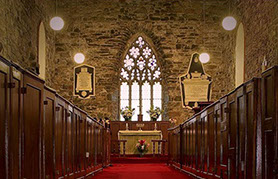 In the Tripartite Life of St. Patrick we find Patrick coming to this place where “the fishful Moy mingles with the ocean,” where he was given a grant of land by the local chieftain. The manuscript further informs us that “on the Southern bank of the river he erected a noble church, later called the Episcopal seat of Killala, over which he placed one of his disciples, Muredeach by name, as its first bishop.” The description and ancient geography is quite accurate, and even though the sacred and mighty river Moy now runs North-South, the old channel once bent Westward past the island of Bartra, leaving Killala on its South bank.
In the Tripartite Life of St. Patrick we find Patrick coming to this place where “the fishful Moy mingles with the ocean,” where he was given a grant of land by the local chieftain. The manuscript further informs us that “on the Southern bank of the river he erected a noble church, later called the Episcopal seat of Killala, over which he placed one of his disciples, Muredeach by name, as its first bishop.” The description and ancient geography is quite accurate, and even though the sacred and mighty river Moy now runs North-South, the old channel once bent Westward past the island of Bartra, leaving Killala on its South bank.
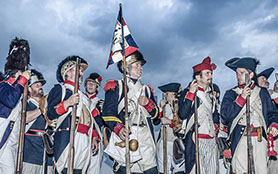 Killala is situated 13 kilometres north-west of Ballina and just 60 kilometres from Ireland West Airport, Knock. Built on the west side of the bay which bears its name, Killala, or ‘Saint Patrick’s City’ as the renowned scribe, Giolla McFhirbisigh referred to it in 1417, is a genuinely old town of immense character. As already mentioned, the town is remarkable in Irish history for its unique associations with our patron Saint Patrick and equally so as the first place taken and garrisoned by a small Franco-Irish army under the command of French General, Jean Joseph Amable Humbert, on 22 August 1798.
Killala is situated 13 kilometres north-west of Ballina and just 60 kilometres from Ireland West Airport, Knock. Built on the west side of the bay which bears its name, Killala, or ‘Saint Patrick’s City’ as the renowned scribe, Giolla McFhirbisigh referred to it in 1417, is a genuinely old town of immense character. As already mentioned, the town is remarkable in Irish history for its unique associations with our patron Saint Patrick and equally so as the first place taken and garrisoned by a small Franco-Irish army under the command of French General, Jean Joseph Amable Humbert, on 22 August 1798.

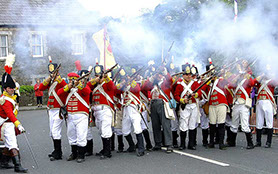 Mentioned by James Joyce in Ulysses, the Killala of 1798 was also the inspiration and setting for the play Caitlín ní Houlihan by William Butler Yeats. Furthermore, the events of 1798 also gave rise to the vernacular cognomen Bliain na bhFrancach-‘The Year of the French,’ and in turn bestowed the colloquial title ‘French Mayo’ to the county. Other sources claim that Killala may well have been the “illustrious Nagnata” alluded to by the esteemed Greek geographer, ‘Ptolemy of Alexandria’ in the second century AD.
Mentioned by James Joyce in Ulysses, the Killala of 1798 was also the inspiration and setting for the play Caitlín ní Houlihan by William Butler Yeats. Furthermore, the events of 1798 also gave rise to the vernacular cognomen Bliain na bhFrancach-‘The Year of the French,’ and in turn bestowed the colloquial title ‘French Mayo’ to the county. Other sources claim that Killala may well have been the “illustrious Nagnata” alluded to by the esteemed Greek geographer, ‘Ptolemy of Alexandria’ in the second century AD.
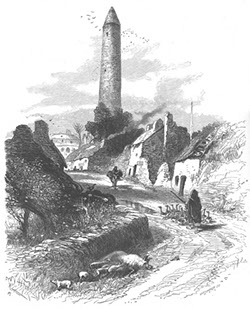
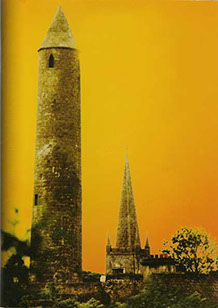 Graced with an impressive round tower, the presence of which indicates the ancient celebrity of the town as an ecclesiastical Christian centre and place of learning, an iconographic Cathedral, and quaint winding streets, Killala which is also blessed by its location close to several splendid blue-flag beaches, has a palpable transcendence and immanence-‘the mystery of history.’
Graced with an impressive round tower, the presence of which indicates the ancient celebrity of the town as an ecclesiastical Christian centre and place of learning, an iconographic Cathedral, and quaint winding streets, Killala which is also blessed by its location close to several splendid blue-flag beaches, has a palpable transcendence and immanence-‘the mystery of history.’
In addition, the town boasts panoramic views that stretch away north across the bay to county Donegal, east over Bartra Island to Inishcrone in county Sligo, west to the mighty Nephin mountain and the musical Hills of Erris, and south by the course of the generous River Moy to Ballina town.
Famed in song and story and prominently featured in the colourful pages of Ireland’s history, Killala is equally well known for the kindness of its citizens and the genuine heartiness and warmth of their welcome. This generosity of spirit, a remarkable trait in these times, will become evident once you enter the area and if you choose to visit any of the wonderful restaurants, pubs, or shops, or even just stroll around, you will immediately encounter an unaffected charm and a real hospitality rarely experienced anywhere else in the world.
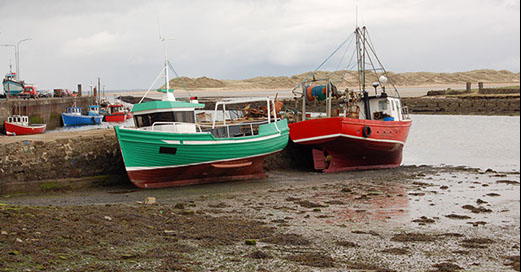 Killala as you would expect from its location is a thriving fishing port and boasts an active working harbour and old stone quays once blessed by saints. Boats may be hired for angling or sightseeing trips around ‘Killala’s Broad Bay,’ framed as it is by majestic cliffs and a historic coastline over which clouds move in a constantly changing unique procession. It is often said that there is an unexplained sense of peace and spiritualism out on the waters of Killala Bay and consequently this is about as close to Heaven on earth as anyone is likely ever to get!
Killala as you would expect from its location is a thriving fishing port and boasts an active working harbour and old stone quays once blessed by saints. Boats may be hired for angling or sightseeing trips around ‘Killala’s Broad Bay,’ framed as it is by majestic cliffs and a historic coastline over which clouds move in a constantly changing unique procession. It is often said that there is an unexplained sense of peace and spiritualism out on the waters of Killala Bay and consequently this is about as close to Heaven on earth as anyone is likely ever to get!
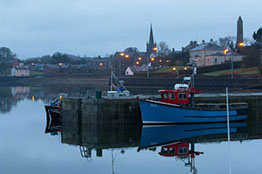 A truly remarkable place invested with its own vibrant mystery, unique heritage and intense historical presence, Killala has a continuity and timeless magic rarely seen in Irish towns and rightly deserves its vernacular title ‘the grandest undiscovered diamond in the West of Ireland.’
A truly remarkable place invested with its own vibrant mystery, unique heritage and intense historical presence, Killala has a continuity and timeless magic rarely seen in Irish towns and rightly deserves its vernacular title ‘the grandest undiscovered diamond in the West of Ireland.’
Local tradition maintains that many years ago an old English gentleman who was making a tour of Ireland unexpectedly happened to spend a few days in Killala town from where he explored the surrounding region and its antiquities. It is told that the elderly traveller was so struck by the natural beauty, the ancient quality and solitude of the place, and the welcome of the people, that at the time of his visit he was unable to find words to describe the experience. In the aftermath of his many journeys throughout the country, the gentleman traveller declared to a friend saying ‘I know few places in Europe, or, for that matter, even in the remotest parts of the world where the real qualities of life are so complete as they are in Killala. I am so impressed by this little town, by its citizens and by its location, that I am unable to recite its characteristics-words fail me.’ He continued, ‘I will content myself with saying-Killala defies adjectives.’
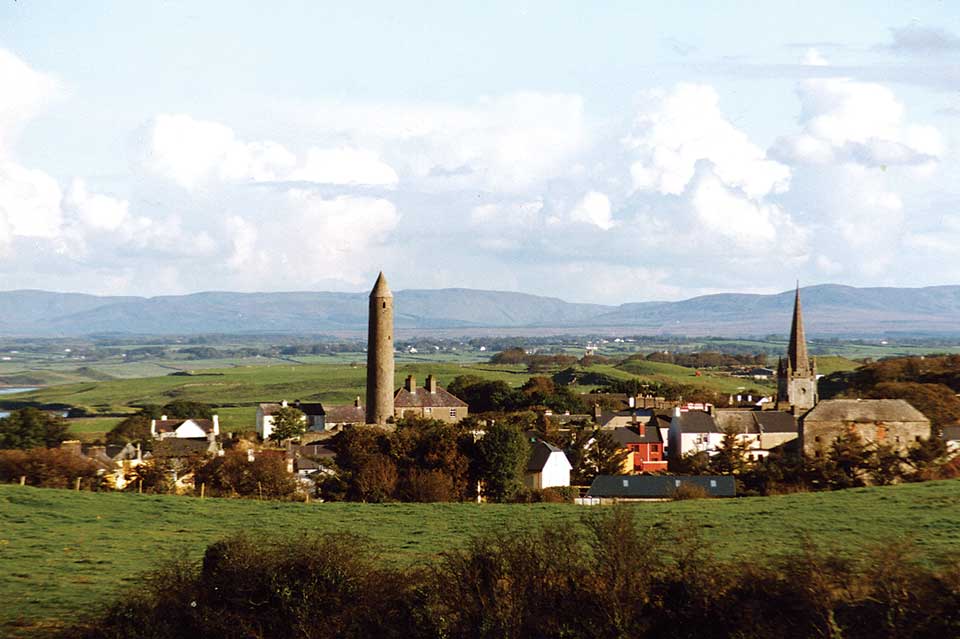
View these photos in a gallery












































































